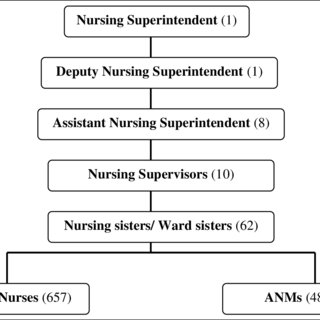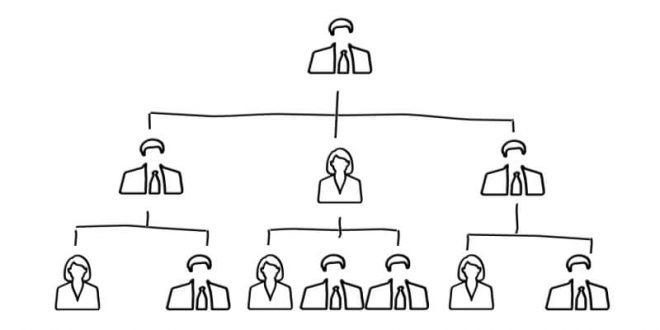All organizations operate under a chain of command. It provides every worker with responsibility and authority they can follow. They are the guidelines, the do’s and don’ts, and the rules and regulations for people in that organization.
In many job interviews, employers will ask you how you can resolve a conflict situation. This question directly relates to the chain of command. And your answer should be in line with this chain of command.
Do healthcare organizations have a chain of command?
If you are wondering whether healthcare centers have a chain of command, the answer is yes. However, medical facilities are not your typical business organization.
We face many issues in healthcare systems during a wrong diagnosis or incorrect results. In these cases, the culprits here are most often the nurses and not the practitioners. And this is due to their inability to follow the chain of command.
Therefore, as a caregiver working in the medical field, one must adhere to strict guidelines. Failing to do so will strip you of your job and even your nursing license.
Every nurse should follow a chain of command if they are concerned about the work policy and patient care. The lines of responsibility can get cloudy in health care facilities. However, in hospital settings where there is a big rush, it is strict and structured. Thus, your responsibilities become more prominent in such situations or environments.
In this article, we will highlight the chain of command for nurses and their importance. So, let’s dive into it.
What is the chain of command for nurses in healthcare centers?

In most hospitals, the chain of command is represented with a chart. This chart is known as an organizational chart. In simple terms, the chain of command for nursing is the line of authority through which orders are passed down within the different departments. This includes the nursing units, hospital staff, and other units.
Nurses who ignore the chain of command can lose their jobs, and in some instances, they have to forfeit their licenses.
The chain of command in nursing falls under several hierarchies. First of all, we have the nurse techs. Next comes the staff nurses, and so on. We work our way up to the Chief Nursing Officer and, eventually, the head of the department.
Depending on the situation, a nurse’s chain of command usually follows different scenarios or lines of concern. Some health care organizations or hospitals are business-oriented and have a particular aim of making money. Therefore, there is a chain of command that focuses on this aspect. This includes the board of members and the body that manages the organization.
However, there is a separate chain of command for nurses. And most of them have nothing to do with the line of business. Instead, their line of authority focuses on patient care. And 90% of the time, they are involved with these tasks.
But there are also specific situations that require patient care managers to assist on the administrative side of things.
Where does the nursing chain of command fall in the category of authority in healthcare organizations?
There are various categories in healthcare services with different authorities. All these categories have their unique form or chain of command. Every hospital usually has a CEO at the top of the hierarchy. They are in charge of the top-level management positions and oversee the development of the system.
However, it is not the job of the CEO to take care of patients. This duty falls under the nurse’s department.
In most large medical centers, you will find the following categories of authority. They are:
- Administrator
- Information (Medical records, Human Resources, etc.)
- Financial (Admission, medical fees, etc.)
- Diagnostics (Radiology, Cardiology, etc.)
- Therapeutics (Speech and language, nursing, etc.)
- Support (Transportation, maintenance, etc.)
However, we should keep in mind that most small hospitals will not have such a vast category.
Therefore, as we can see, the nurse’s chain of command falls under the therapeutics department. And your initial responses and inquires will take place within this department.
The nursing chain of command can be further divided into the following groups.
- Administer
- Director of Nursing
- Asst. Director of Nursing
- Staff Development Coordinator
- Nursing Supervisors
- Charge Nurse
- Staff Nurse
- Nursing Assistants
A thing to note here is that different facilities will have unique names for the various categories.
Are there cases where one can deviate from the chain of command?

While working as a nurse, some situations require you to step out of your line. This can frequently happen during an emergency or something that requires immediate attention. The same goes for the nursing chain of command as well.
During such scenarios, you will find someone else in charge of the matter. In most cases, charge nurses or doctors handle the situation. Similarly, if there is a viral outbreak, a specific department or physician will be in charge until the situation calms down.
How can you follow the nurse’s chain of command?
Following the chain of command in a nurse’s department is easier said than done. You are bound to face several conflicts with the manager, doctors, and physicians of your facility. For instance, you might face problems when your physician orders you to administer a dosage not suitable for the patient.
Such instances require a critical evaluation of the situation. Your first step here is to approach the doctor who is in charge of that particular patient. If they are not available or not listening to you, you must follow the nursing chain of command.
The first step here is to reach out to your charge or head nurse. If they are responsive, they will make things easier for you by taking charge immediately. But if the head nurse is unresponsive or unavailable, your next step is to report to the Department Director of Nursing or DON.
DONs usually have a 9 to 5 schedule. But when necessary, they can assess the situation at any given time.
If you face the same problem with the DON, you can contact the Chief Nursing Officer (CNO). The CNO usually has a high rank and can be second in command to the administration.
Therefore, he has quite a lot of authority to oversee the situation and provide assistance. If the CNO also doesn’t respond, your only option is to reach the CEO, director or admins.
It would help if you also remembered to document the procedures. For instance, if you do not receive proper authorization for performing a medication, make sure to put it in the tab. Additionally, you can conclude and provide reports when necessary, following the hospital policies.
These downsides are expected in a nursing chain of command in different healthcare services. And in most cases, poor management and administration are to blame. So, whenever nurses face any conflict or resistance from the nursing chain of command, they can turn towards one thing. And that is to follow the procedures or policies of the hospital according to the protocols.
What if you face problems with your co-workers or colleagues?

If you’re facing problems with your co-workers and staff, you cannot bring physicians into this. You won’t have any direct attachments with a physician in the nurse’s chain of command. What you can do instead is reach out to the charge or head nurse.
However, such misunderstandings and personal problems can wait as they do not require immediate attention. And since it is not a medical emergency, you can wait for the appropriate time to express your concerns.
Once the problem is stated, the nurse manager will work to tackle the issue. If they cannot, they can share it with the superiors in the chain of command. This will continue until the desired results are achieved.
How important is the nursing chain of command?
You should know that there is no harm in asking for help. Many nurses consider this a weakness and that it makes them less reliable. Some might even consider it a waste of time to follow every protocol for something you can do yourself.
However, the nursing chain of command plays a massive role in making lives easier. It takes the pressure off of you and puts less stress on your workload. Plus, it also protects your nursing license if the consequences are unfavorable.
Therefore, it is up to every member of the nursing department to follow these guidelines. Here are some vital points why the nursing chain of command is essential.
- The nursing chain of command allows well-qualified and strong-minded persons to perform the best duties.
- It allows for efficient time management among the supervisors and staff.
- It helps in systematic and standard communication in various situations.
- It protects the well-being, health, and safety of patients, ensuring top-level care and supervision.
- Supervisors can better understand the tasks of various people in the nursing department. This understanding is absent within the upper management.
In addition to the importance, here are a few practical know-hows for nurses following the chain of command.
- Always speak up when patients face difficulties with their health or treatment.
- Follow every chain of command, precisely and step-wise.
- Voice out various developmental requirements with the Chief Nursing Officer and resolve them at the earliest.
- Document and complete all reports accurately under the hospital policies and procedures.
Conclusion
We cannot deny the importance of the chain of command in nursing. This chain of command is active in all healthcare services to ensure the growth and development of the organization, employees, and, most importantly, the patients.
If you ignore the chain of command, you are putting lives in danger. Plus, it causes inconvenience for your staff without a cause. Thus, your ability to follow the chain of command describes your character. It shows your professionalism and your abilities regarding your job as a nurse.
 Nursing Trends
Nursing Trends







